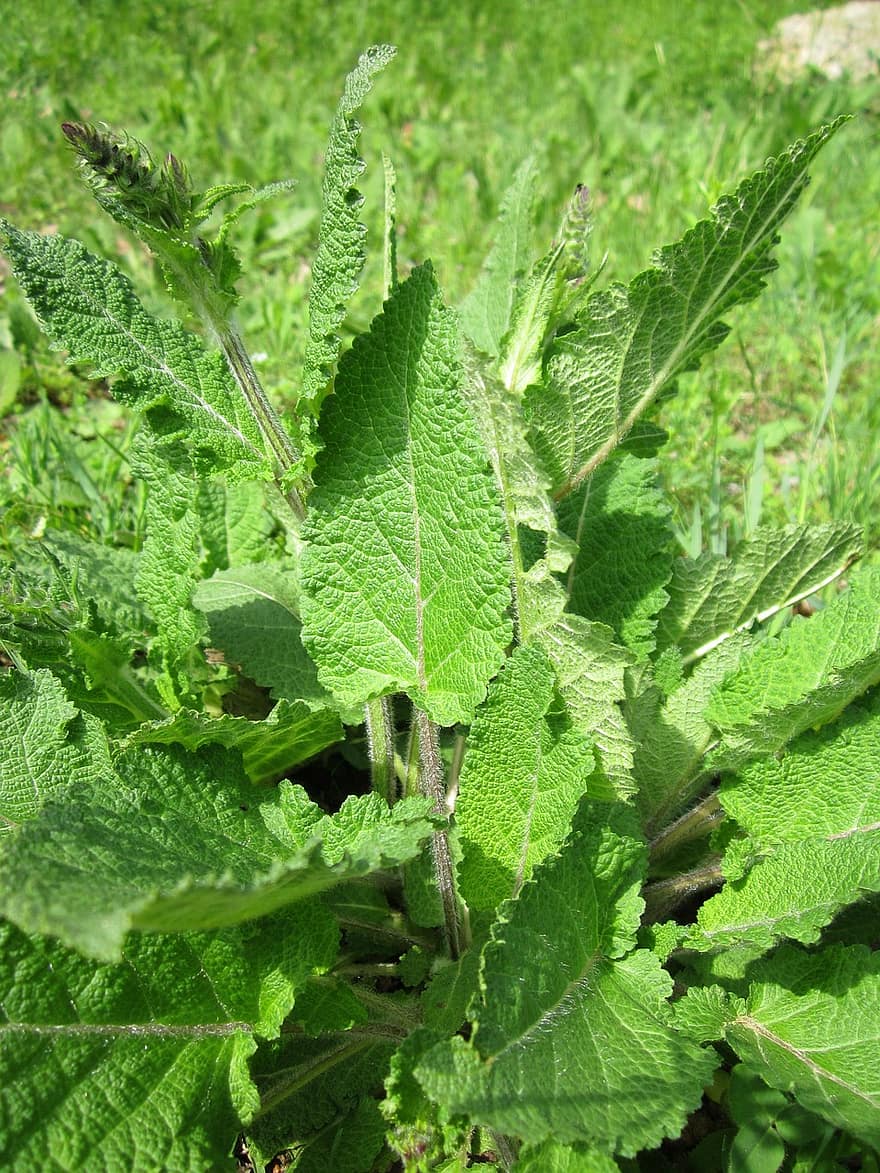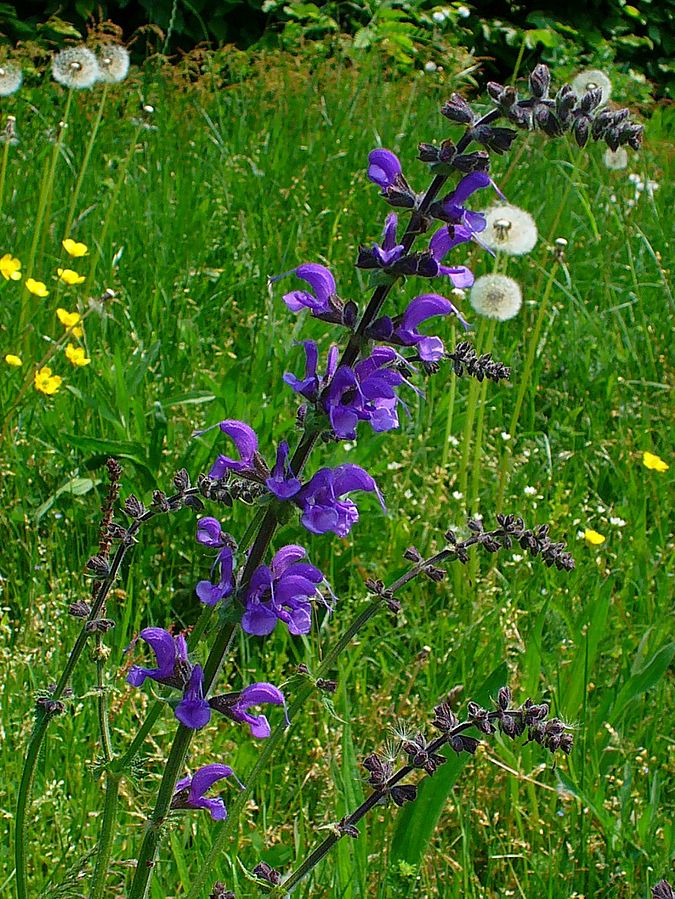Meadow Clary

Meadow Clary
(Salvia pratensis)
Priority: - Prevent / EDRR
Tags: Terrestrial
Identification and Reproduction
Identification:
- Meadow clary, also known as meadow sage, is an introduced perennial that grows between 0.5 and 1 metre tall.
- It is a shrub-like sage that forms many stems (1-8) from a root crown. Stems bear very few leaves.
- Leaves are primarly found at the base of the plant. They are a dull grey green, egg-shaped, covered in fine hairs, with a rough wrickly texture and are aromatic when crushed.
- Flowers are found in spike-like racemes at the end of stems. They are bilabiate (two-lipped) and are deep lavender to blue in colour. Flowers are found in whorls of 4-8 flowers per node with small bracts under.
- Blooms occur early in the summer but if conditions are appropriate will rebloom later in the season.
Reproduction:
- Primarily reproduces by seed but can also spread vegetatively.
Habitat & Ecology
- Is well adapted to various moisture levels, capable of growing in dry and medium moist soils.
- Prefers well-draining soils in full sun sites.
- Can tolerate drought.
- Thrives in gravelly and sandy soils.
- Commonly found along linear corridors, in grasslands, crop fields, floodplains and mowed lawns.
- Currently there are not any confirmed infestations in BC.
Impacts
Ecological:
- They displace native plant species.
- Reduce wildlife foraging and habitat.
- Quick to spread and cover areas extensively.
Management
Prevention is a high priority for this species.
- Maintain good ground cover to slow the spread and prevent invasive establishment.
- Read and carefully purchase wildflower mixes from reputable sources.
- Do not buy, sell or plant meadow clary.
- Learn to identify meadow clary.
- Report this plant if you think you have seen it.
Resources
Download the BC Invasive Species Alert on Meadow Clary here.
Header photo (Adrian Michael).




